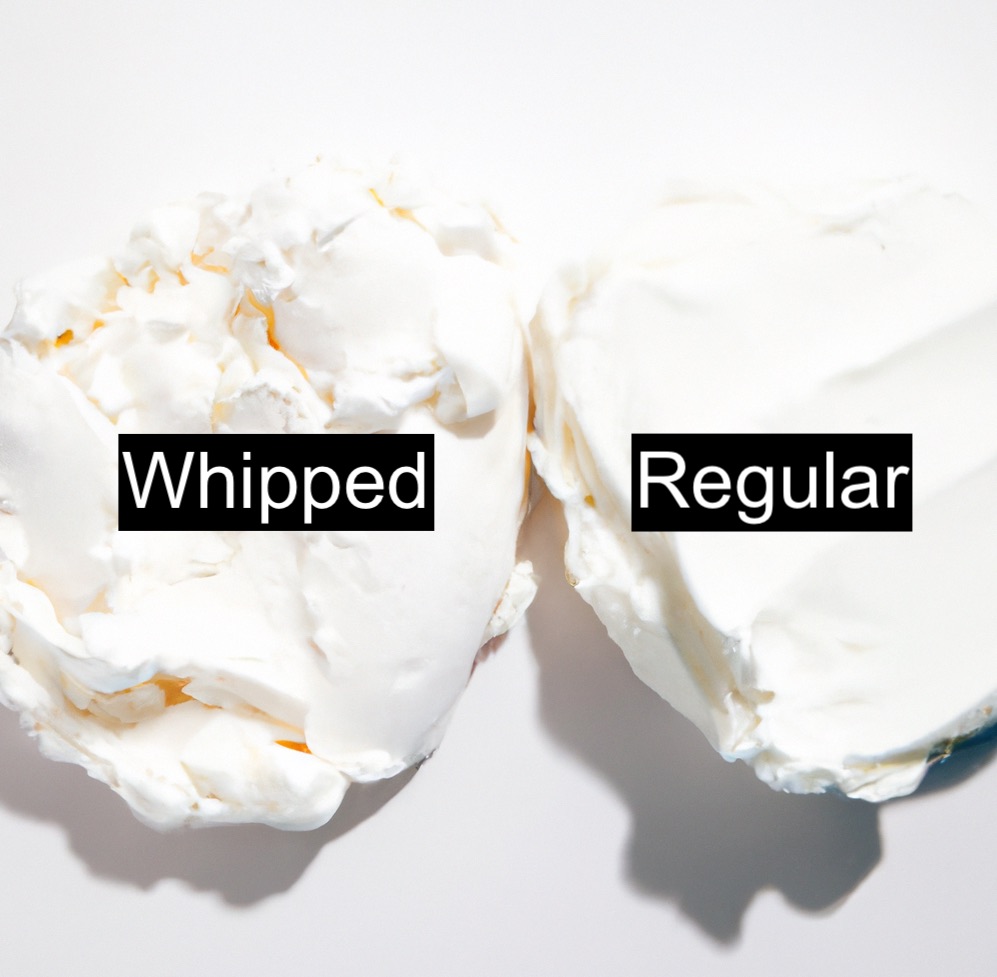Last Updated on March 22, 2024 by Aaron
Whipped cream cheese is simply regular cream cheese that has been whipped until it is light and fluffy.
It can be used in any recipe that calls for regular cream cheese, and it is a great way to add some extra flavor and richness to your dish. It is often used as a spread or dip and can be substituted for regular cream cheese in most recipes.
Table of Contents
Is whipped cream cheese the same as regular cream cheese?
Yes, whipped cream cheese is the same as regular cream cheese.
Regular cream cheese contains milk proteins and fat that make it thick and dense while whipping air into the mixture when making whipped cream cheese makes it lighter in texture with a fluffier consistency.
A good way to think of this difference is comparing regular butter versus whipped butter; both are still made from cow’s milk but one has been whipped into a light, fluffy consistency while the other remains its original thickness.
This means that regular cream cheese can be substituted for whipped cream cheese, but it will not have the same texture or even flavor.
How to make whipped cream cheese
It is also very easy to make your own whipped cream cheese. You will need a heavy-duty stand mixer and some cream cheese.
You can also whip by hand if you don’t have a stand mixer, but it will take significantly more time and elbow grease.
Simply cut the cream cheese into small pieces and add it to the bowl of your stand mixer. Start whipping on low speed until the cheese is broken up and then increase the speed to medium-high and whip until light and fluffy.
Make sure that you do not use soft or nonfat varieties of cream cheese; they are too thin for whipping. Instead, choose a high-fat content brand such as Philadelphia Cream Cheese or Extra Creamy Cream Cheese.
A large bowl helps whip the thick mixture into shape!
You may want to place it in another room while mixing so there aren’t any distractions from other family members who might be trying out their new kitchen gadgets nearby.
The first step is simply adding cold water until it reaches room temperature before starting with regular milk – this ensures that all ingredients mix together well. Secondly, cream cheese and milk are whipped together on medium-high speed for about two minutes until the mixture becomes thick, white, and fluffy.
Lastly, you will want to add a pinch of salt to enhance the flavor before turning off the machine – voila! Done in three easy steps.
Can I substitute cream cheese for whipped cream cheese?
Yes, you can substitute regular cream cheese for whipped cream cheese in most recipes.
However, keep in mind that the texture and flavor of the dish may be different than if you had used whipped cream cheese.

